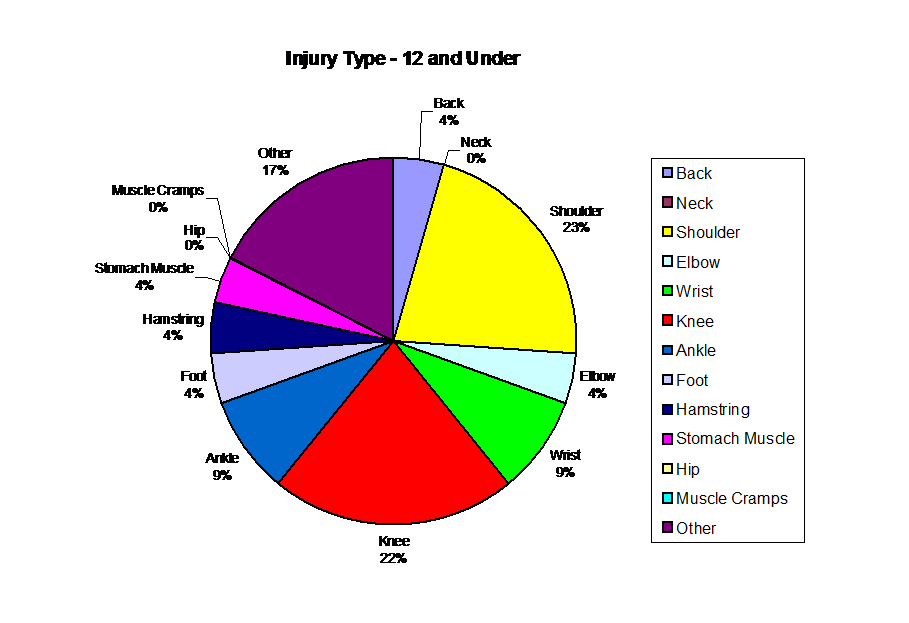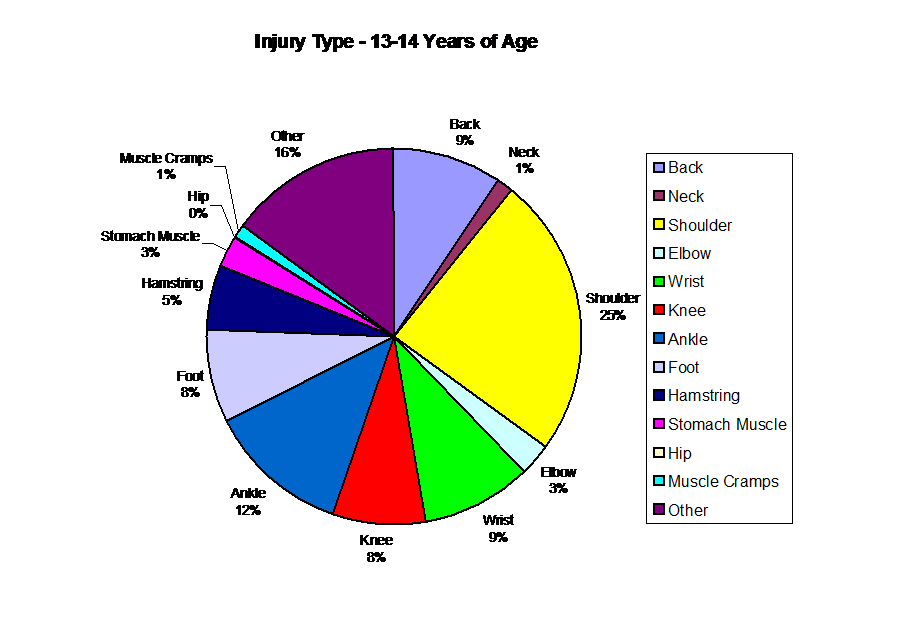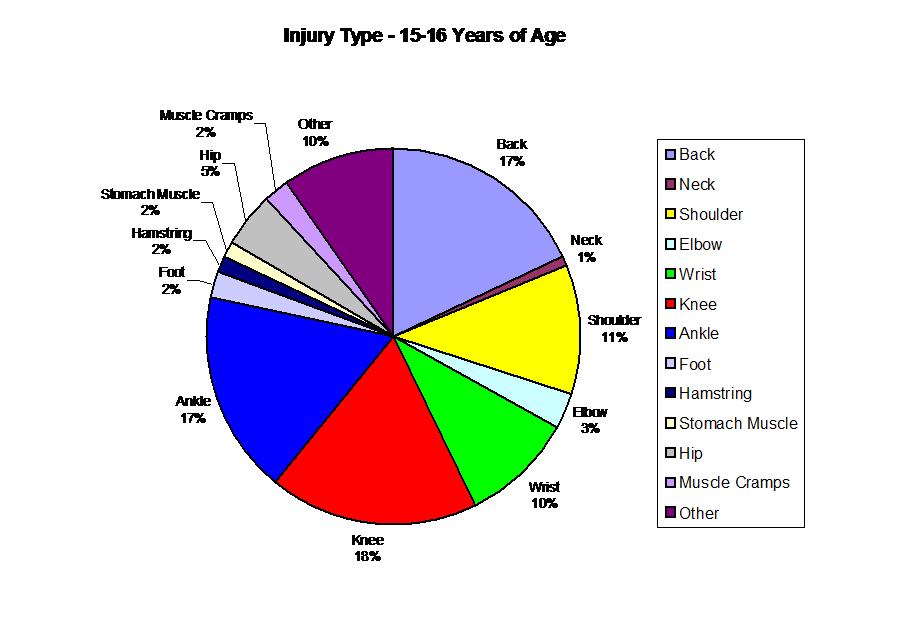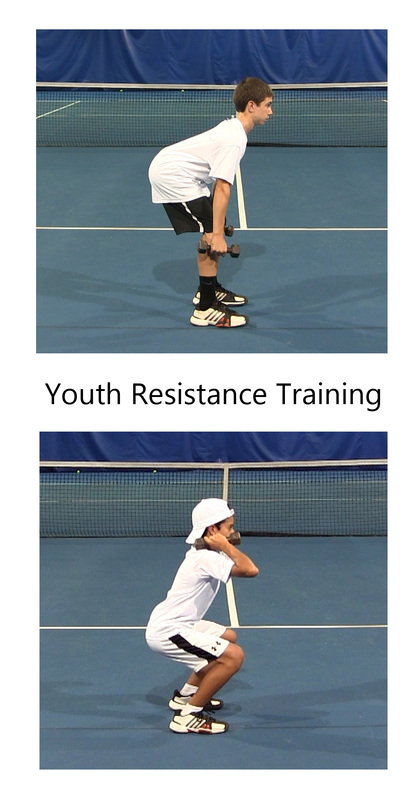One unique study involved a series of questions on training, technique, competition and other factors that was provided to all participants at the largest junior team tennis event in the US [5]. It was collected at 12 different locations and 861 junior tennis players completed the survey:
- 97% of individuals who completed the study
Gender breakdown:
- males-43% (356);
- females-57% (N=476).
Age: 10-17
As the goal of the study was to evaluate injury patterns and trends a clear definition of injury was important. “An event that forces a player to miss 3 or more consecutive days of tennis play, either practice or competition, or that requires medical attention from a trainer, therapist, or doctor.”
Major Findings From This Study
- For both the 12 and under and 14 and under age group the shoulder was the most often injured area. However for the 16 and under age group the back was the most commonly injured area.
- Only 51% and 54% (male and female) of respondents use free weights and only 38% and 39% use machines.
- Only 43% and 58% (male and female use medicine ball during training).
- 90% and 97% (male and female) use a double-handed backhand
- 20% and 22% (male and female) use an abbreviated/short service motion
- 83% of all players predominantly train and play on a hardcourt surface
- 81% of all injuries in junior tennis players were tennis related
- 51% of all athletes that reported an injury visited a Physician or Physical Therapist
Below are three charts that provide the breakdown of the location of injuries based on the three different age groups (12 and under; 14 and under; 16 and under).
The shoulder and back are two major areas that need a greater focus in training and injury prevention programs. The high prevalence of hardcourt tennis play is something that needs to be taken into account when devising on and off-court training programs. The increase in injuries as athletes’ age through their junior career is also something that should be of major interest to coaches, trainers and administrators. More education is needed to ensure that appropriate understanding of volume and injury prevention programs are implemented to help reduce the likelihood of injuries in junior tennis players. This is something that requires good communication between tennis coaches, certified tennis performance specialists and parents to ensure that the young tennis players develop and optimize performance while limiting the occurrence of injury.
1. Kibler, W.B. and M. Safran, Tennis Injuries, in Epidemiology of Pediatric Sports Injuries, D. Caine and N. Maffuli, Editors. 2005, Base, Karger. p. 120-137.
2. Hutchinson, M.R., et al., Injury surveillance at the USTA boys' tennis championships: A 6-yr study. Medicine and Science in Sports and Exercise, 1995. 27(6): p. 826-30.
3. Reece, L.A., P.A. Fricker, and K.F. Maguire, Injuries to elite young tennis players at the Australian Institute of Sport. Aust J Sci Med Sports, 1986. 18: p. 11-15.
4. Winge, S., U. Jorgenson, and L. Nielson, Epidemiology of injuries in Danish championship tennis. Int J Sports Med, 1989. 10: p. 368-371.
5. Kovacs, M.S., et al., Demogrpahic data and injury trends in American national junior tennis players. Journal of Strength & Conditioning Research, 2012. 26(1): p. S62.











 RSS Feed
RSS Feed
